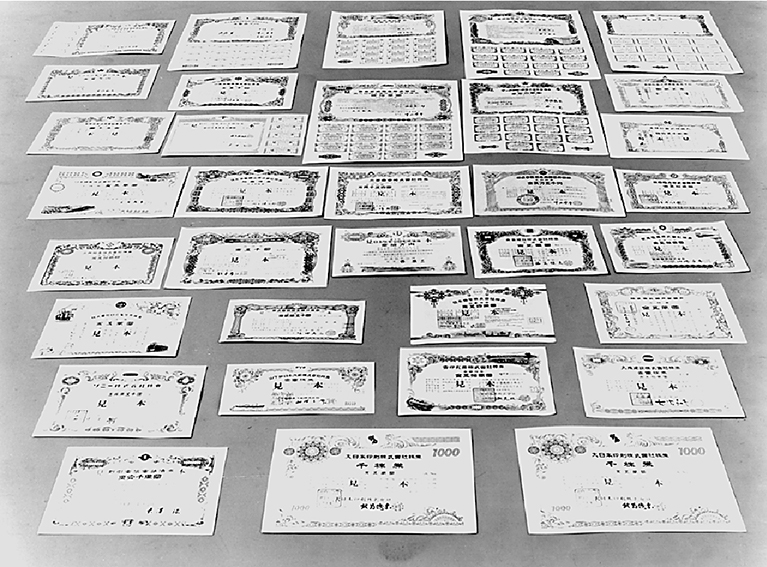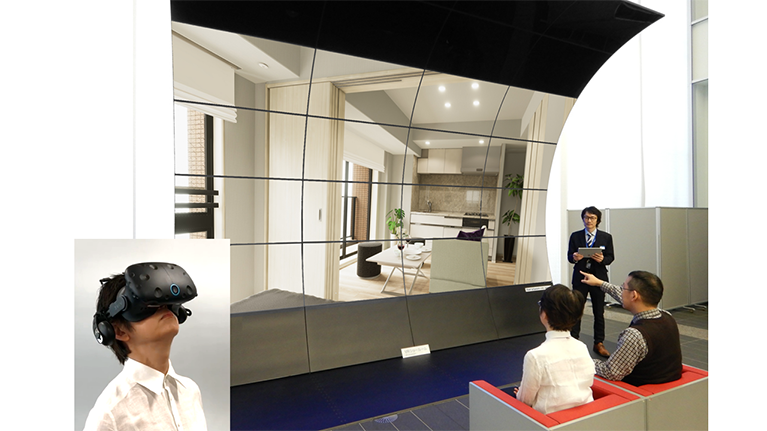Information Processing: Origin and Development
Development of unique information processing technology alongside digitization in printing technology

DNP has been engaged in securities printing of public bond certificates, stock certificates and other securities since around 1897. At that time, securities had patterns called guilloche that were individually handcrafted with very fine patterns by skilled craftsmen. A high level of technology was required to ensure security. Initially the pattern ensuring the security of the certificate was visible, but as time went by, the pattern was applied in ways invisible to the naked eye, and in the 1980s, the prototype of the rewritable smart card was developed.
In the printing process, we take different forms of information including text, photographs, illustrations, and video and convert them into the most appropriate format, along with the color management of processed images and the organizing and storing of data. Through this work, we have gained expertise in handling large volumes of data, which has expanded to include big data processing and analysis, as well as security technologies. Along with the digitization of printing, DNP has independently developed and advanced a wide range of planning, design and information processing technologies, including image processing and media conversion.
Virtual reality (VR)
Applying image processing technology cultivated in the printing business to VR.
Image processing and language processing technologies
DNP has been developing and driving the evolution of image processing and natural language processing technologies in line with the digitization of text and image data in the printing business. Using the expertise we have accumulated through these initiatives, we are looking to further develop these technologies with AI technology. Using image recognition technology that extracts useful information from still and moving images, CG and VR technologies that can reproduce highly realistic images and natural language processing technology that comprehends the meaning of natural human language, we are developing new technologies that can be used in the creation and distribution of information media, alongside a wide range of fields including security, marketing, imaging, education, medicine, and entertainment.
VR initiatives using photo-realistic CG

The recent decrease in the labor force, reforms in working styles, the proliferation of online shopping and innovations in ICT technology have changed the way stores sell products and consumers purchase them. Against this backdrop, there is increased attention on initiatives that provide optimal shopping experiences for consumers visiting stores and maximize their satisfaction.
DNP has developed a "VR showroom" and "VR model room" system that enables customers to make purchasing decisions on products through a virtual reality (VR) customer experience just like real-life shopping. The system is currently available to companies that operate automobile showrooms and condominium model rooms. It enables customers to experience the products in photo-realistic CG as if they were actually in front of them, through a large screen display or by wearing a VR device. In automobile showrooms, customers can choose their desired car model, color, options, etc., and see the car with the specifications they want on the spot. In condominium model rooms, customers can experience different floor plans and types of interior coordination.
The system creates hyper-realistic 3D CG data based on CAD data, design drawings and other sources, achieving a level of photo-realistic CG that feels just like the real thing in a VR space. Until now, it has been difficult to create photo-realistic CG for interactive systems featuring a high degree of freedom, such as VR, because of the high computational load. We have made this possible by uniting and optimizing advanced image processing technology cultivated through our printing business and VR technology. In addition to the photo-realistic presentation of products through VR, moving forward we will provide new shopping experiences leveraging augmented reality (AR) technology and AI-based customer service functions.
Smart cards
Our track record and expertise of handling very important and confidential printed materials allows us to ensure reliable, safe and secure transactions.
Information security technology
DNP possesses three core technologies: (1) smart card OS and application development technology, (2) smart card production technology and (3) network and server system development and operation technology. By constantly upgrading these technologies, we are developing many different products and services, including the manufacture and personalization of smart cards and peripheral services, as well as the development and operation of payment services for cashless transactions.
What is a smart card?

A smart card is a card with a built-in IC chip, non-volatile memory for storing security data and other data, and a CPU. They come in the form of "contact cards," "contactless cards" and "dual interface cards" that have both contact and contactless functions.
In Japan, computers were first introduced at financial institutions in the 1960s, and demand for printing business forms increased as part of the streamlining of office work. From the 1970s, cash dispensers and ATMs were introduced at banks, and cash cards quickly grew in popularity. Later, credit cards and membership cards also became commonplace, and by the late 1980s, around 100 million magnetic cards had been issued.
DNP had been developing magnetic cards since the late 1960s, and by the end of the 1970s had established a mass production system that allowed us to lead the market as one of the top magnetic card manufacturers in Japan. Since then, we have worked to include magnetic bars in bank books and provided a number of services pertaining to cash cards, while also leading the shift toward smart cards.
DNP continues to hold top share in the Japanese market, providing smart cards that can be used across many industries and business categories, including credit cards, transportation cards and electronic money cards. We are currently driving the further evolution of this field by developing biometric cards with fingerprint authentication that are compatible with FeliCa, a type of contactless smart card technology that is widely used for electronic money and employee ID cards in Japan.
Printing technology expansion and enhancement